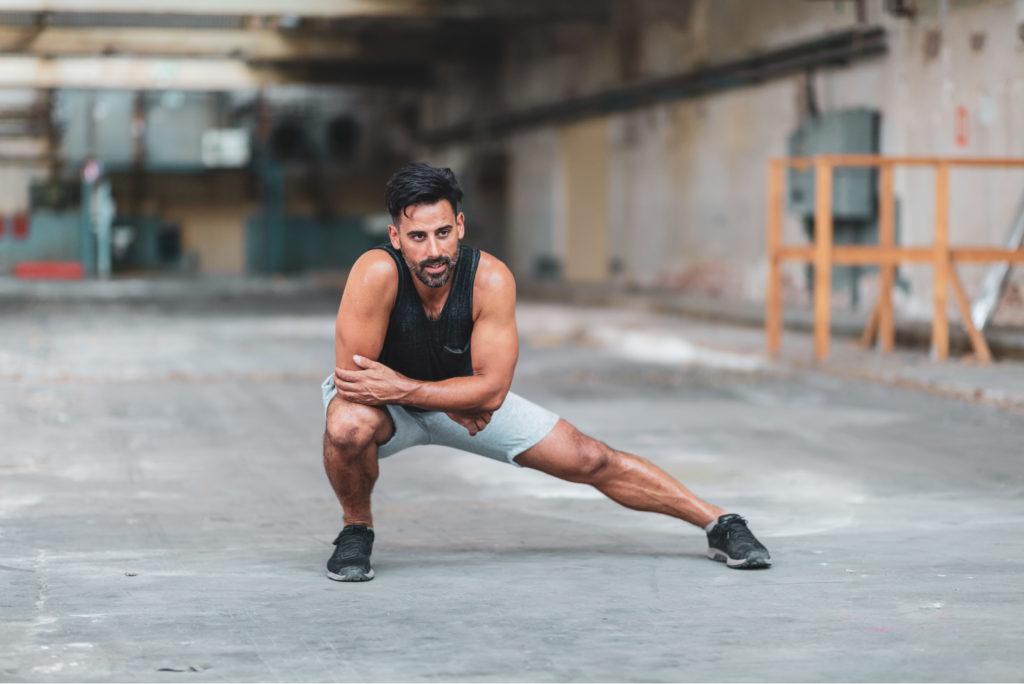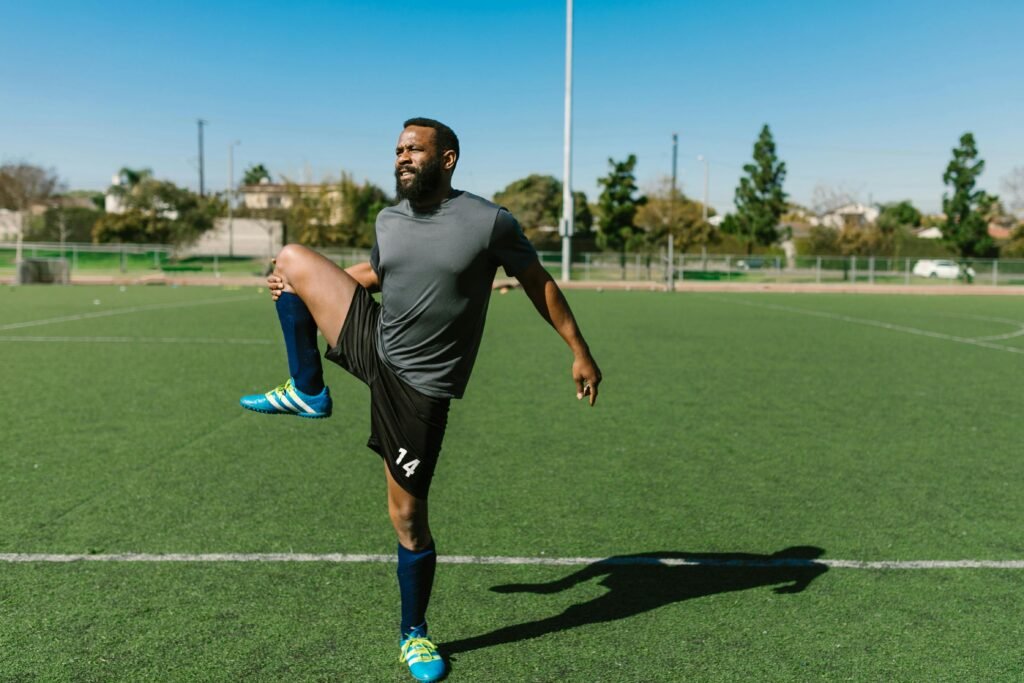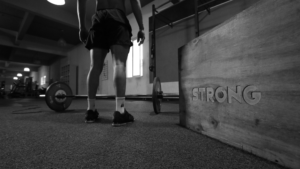Flexibility is a crucial component of overall physical fitness, yet it often gets overlooked. Most people spend their day in a position where many of the muscles in the body are underused and tight. If you are already struggling with this and then try to add physical training on top of it, the situation will get worse over time.
Whether you’re an athlete, a desk worker, or a retiree, incorporating stretching into your daily routine can yield significant benefits. In this post, we’ll explore the importance of flexibility, provide an overview of dynamic stretching programs and functional range conditioning, and offer tips to make stretching a habit.
Table of Contents
The Importance of Flexibility
Flexibility refers to the ability of your muscles and joints to move through their full range of motion. Here are some key benefits of maintaining good flexibility:
- Improved Mobility and Posture
- Flexibility exercises help elongate muscles and improve joint movement, allowing for more fluid and efficient movement. This improved mobility can enhance your ability to perform everyday activities and sports-related tasks.
- Better posture is another significant benefit of increased flexibility. Tight muscles can lead to poor posture by pulling your body into suboptimal positions. For instance, tight chest muscles can cause rounded shoulders, while tight hip flexors can lead to a forward-tilted pelvis. Stretching helps to counteract these imbalances and promotes a more upright, aligned posture.
- Reduced Risk of Injury
- Flexible muscles are less prone to injury because they can handle stress better. When muscles are flexible, they can move more freely, which reduces the risk of tears, strains, and other injuries.
- Stretching before and after physical activity prepares your muscles for the movements they are about to perform, increasing blood flow and muscle temperature. This preparation helps prevent injuries that can occur from sudden, strenuous movements.
- Enhanced Performance
- For athletes, flexibility can enhance performance by allowing for more efficient movements. Flexible muscles can contract and relax more quickly, which can lead to improved strength, speed, and power.
- For non-athletes, flexibility makes everyday tasks easier and more efficient. Whether you’re bending down to tie your shoes or reaching for an item on a high shelf, flexibility helps you move more freely and comfortably.
- Decreased Muscle Soreness
- Stretching can help reduce muscle soreness after a workout by increasing blood flow to the muscles, which helps to clear out metabolic waste products like lactic acid.
- Post-workout stretching also helps to realign muscle fibers that may have become misaligned during exercise, reducing stiffness and soreness.
- Stress Relief
- Stretching can also be a great way to relax and release tension in your body. When you stretch, your body releases endorphins, which are natural pain relievers and mood enhancers.
- Stretching also promotes the release of muscle tension, which can build up due to stress, poor posture, or inactivity. This release can help to alleviate physical and mental stress, contributing to overall mental well-being.
- Improved Circulation
- Regular stretching improves blood circulation by helping to increase the flow of blood to your muscles. Improved circulation means that more oxygen and nutrients are delivered to your muscles, promoting faster recovery and muscle growth.
- Enhanced circulation also helps to remove waste products from muscle tissue, which can reduce muscle fatigue and soreness.
- Better Balance and Coordination
- Flexibility exercises can improve your balance and coordination by enhancing the communication between your muscles and your brain. This improved neuromuscular coordination helps you move more gracefully and with greater control.
- Better balance and coordination can prevent falls and other injuries, especially as you age. Regular stretching helps to maintain these critical aspects of physical health, supporting independence and quality of life.

Dynamic Stretching Examples
Dynamic stretching involves active movements that take your muscles and joints through their full range of motion. Unlike static stretching, dynamic stretching is performed with movement and can be an effective way to warm up before physical activity.
- Leg Swings
- Stand on one leg and swing the other leg forward and backward.
- Swing the leg side to side to engage the hip muscles.
- Perform 10-15 swings on each leg.
- Arm Circles
- Extend your arms out to the sides and make small circles.
- Gradually increase the size of the circles.
- Reverse the direction after 10-15 seconds.
- Walking Lunges
- Step forward into a lunge position, keeping your back straight.
- Push off your front foot to bring your back leg forward into the next lunge.
- Repeat for 10-15 steps on each leg.
- Torso Twists
- Stand with your feet shoulder-width apart and your arms extended in front of you.
- Twist your torso to the right, then to the left, keeping your hips facing forward.
- Perform 10-15 twists in each direction.
Dynamic stretching is particularly beneficial before workouts as it increases blood flow, improves range of motion, and prepares your body for physical activity.

Functional Range Conditioning (FRC) Examples
Functional Range Conditioning (FRC) is a system of mobility training that focuses on increasing the active, usable range of motion for all your joints. FRC aims to improve your flexibility, strength, and control, which can lead to better overall movement and reduced risk of injury.
- Controlled Articular Rotations (CARs)
- CARs involve moving a joint through its full range of motion in a controlled manner.
- For example, to perform shoulder CARs, stand tall and slowly rotate your shoulder in a circular motion, keeping the rest of your body still.
- Perform CARs for each joint daily to maintain and improve joint health.
- Progressive Angular Isometric Loading (PAILs) and Regressive Angular Isometric Loading (RAILs)
- These techniques involve creating tension in a specific joint angle to build strength and increase range of motion.
- For example, in a hip stretch, you would push your leg into the ground (PAILs) and then try to lift it against resistance (RAILs).
- These exercises are intense and should be done with proper guidance to avoid injury.
- End-Range Training
- This involves training at the end range of your motion to build strength and control.
- For instance, in a deep squat, you would hold the lowest position and perform small movements to strengthen your muscles at that range.
FRC requires consistency and effort but can lead to significant improvements in your mobility and overall physical health.

Tips for Making Stretching a Habit
- Set a Routine: Incorporate stretching into your daily routine. Stretching in the morning can help wake you up, while stretching in the evening can help you relax before bed.
- Use Technology: There are many apps and online videos available that can guide you through stretching routines and remind you to stretch regularly.
- Listen to Your Body: Pay attention to how your body feels. Stretching should not be painful. If you feel pain, ease off the stretch.
- Combine with Other Activities: Stretching can be done almost anywhere and at any time. Combine it with other activities like watching TV or after a walk.
- Stay Consistent: Consistency is key. Even a few minutes of stretching each day can make a significant difference over time.
Conclusion
Flexibility and stretching are essential practices that everyone can benefit from, regardless of age or fitness level. By incorporating dynamic stretching and functional range conditioning into your daily routine, you can improve your overall well-being and enjoy a more active, pain-free life. Remember, it’s never too late to start! So, take a few minutes each day to stretch, and feel the difference it makes in your life.



